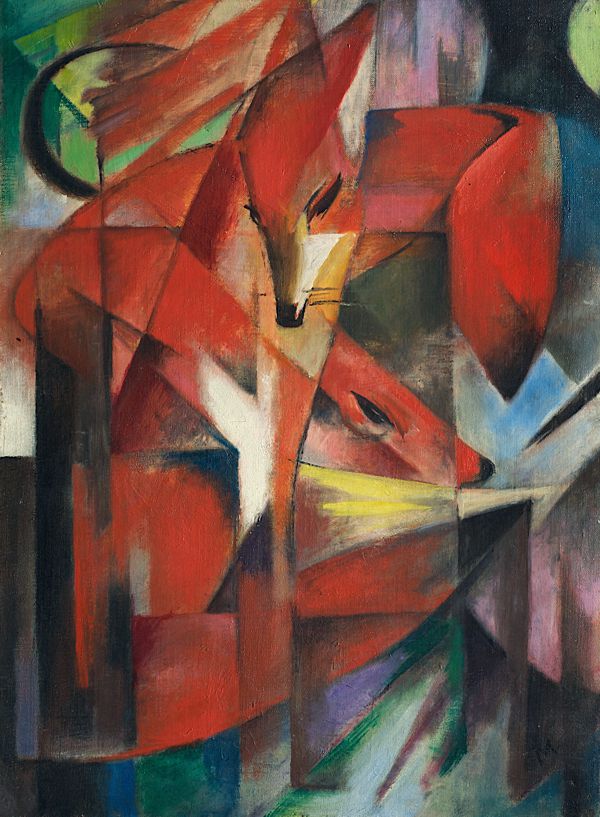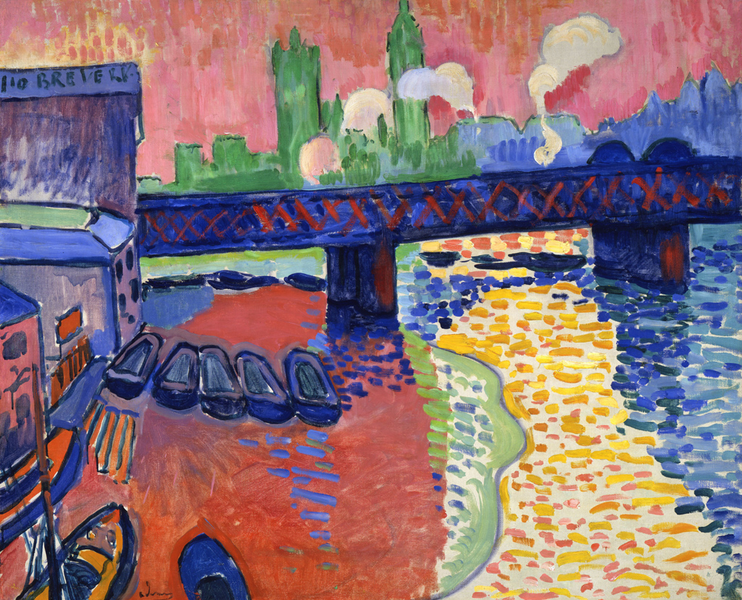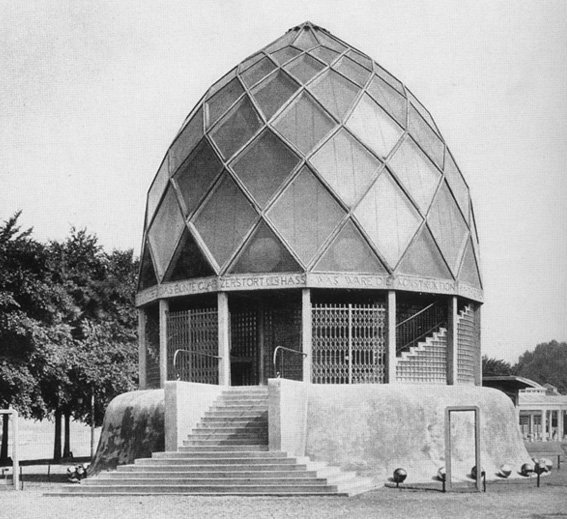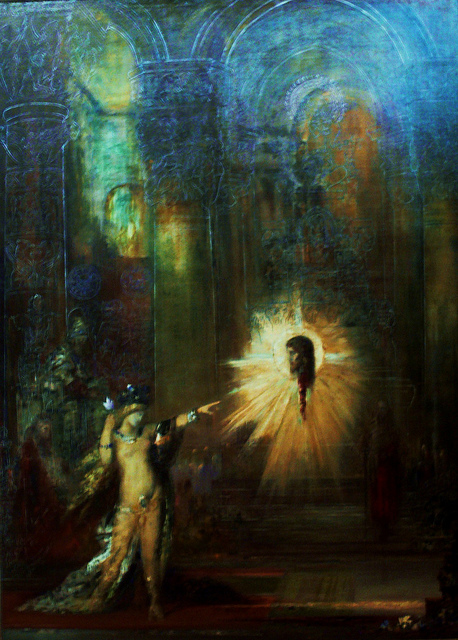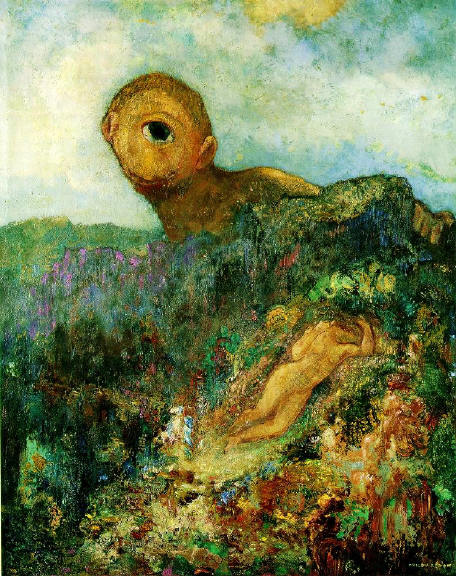Der blaue reiter was a movement lasting from 1911 to 1914, fundamental to Expressionism, along with Die Brücke which was founded the previous decade in 1905.Painters Kandinsky and Marc worked on an almanac in which they showed their artistic conceptions. The title of the almanac, which then became the name of the group, Der Blaue Reiter (The Blue Rider), came from the painting by Kandinsky. His Blaue Reiter ( Blue Rider ) was an adventure in the simplification and stylization of forms and the connection between music and painting.
The name Der Blaue Reiter was taken from one of Kandinsky’s works, Le Cavalier bleu.
Der Balue Reiter combined two currents: the general European Expressionism and French Fauvism and added to these currents an interest in inner and mystical construction, stemming from Theosophy.
The Blue Riders believed that colors, shapes and forms had equivalence with sounds and music, and sought to create color harmonies which would be purifying to the soul. Although in this very earliest works, the impressionistic influence was recognizable, the artists who took part in The Blue Rider were considered to be the pioneers of abstract art or abstract expressionism. Their work promoted individual expression and broke free from any artistic restraints. These Nietzsche's words sum up the group's motto, "Who wishes to be creative must first blast and destroy accepted values."
Members of der blaue reiter were;
Wassily Kandinsky
Franz Marc
August Macke
Paul Klee
Gabriele Münter
Alexej von Jawlensky
Heinrich Campendonk
Albert Bloch
Natalia Goncharova
Marianne von Werefkin
Lyonel Feininger
Arnold Schoenberg
David Burliuk
References;
http://www.arthistoryguide.com/Der_Blaue_Reiter.aspx
http://www.arthistoryunstuffed.com/der-blaue-reiter-painting-2/
http://en.wikipedia.org/wiki/Der_Blaue_Reiter#Members
http://www.huntfor.com/arthistory/c20th/blauereiter.htm
arch
5 Haziran 2012 Salı
Die Brücke
An influential mini-movement of German Expressionism, Die Brucke (The Bridge) consisted of a group of Expressionist painters, who came together in Dresden in 1905. Its founders, all architecture students at the Dresden Technical School who shared a studio in the city, included Fritz Bleyl (1880-1966), Karl Schmidt-Rottluff (1884-1976), Ernst Ludwig Kirchner (1880-1938) and Erich Heckel (1883-1970). Determined to act as a bridge between the popular art of the time and the newly developing modern art, Die Brucke artists were inspired mainly by Fauvism, as well as the traditional social concern and angst, characteristic of Nordic culture. Other influences included Paul Gauguin (1848-1903), African and Oceanic art, tribal motifs - all of which were combined with Fauvist colourism, to create an ultimately modern style of expressionism. The centre for much of this avant-garde art was Walden's Sturm Gallery, in Berlin.
Like The Blue Rider, also The Bridge had a short life. In 1913, the group dissolved in controversy. But all artists continued their work after World War I until 1933. When the German Nazis came to power the former artists of The Bridge were declared as "entartet" (degenerated). All works were banned from museums and either sold outside Germany or burned in public.
Fritz Bleyl
Erich Heckel
Ernst Ludwig Dirchner
Otto Mueller
Emil Nold
Max Pechstein
Karl Schnidt-Rottluff
References;
http://www.artelino.com/articles/the_bridge.asp
http://www.huntfor.com/arthistory/c20th/diebrucke.htm
http://www.msxlabs.org/forum/sanat/267042-sanat-akimlari-die-brucke-kopru.html
http://en.wikipedia.org/wiki/Die_Brücke
http://www.the-art-world.com/history/german-expressionism2.htm
http://www.visual-arts-cork.com/history-of-art/die-brucke.htm
Like The Blue Rider, also The Bridge had a short life. In 1913, the group dissolved in controversy. But all artists continued their work after World War I until 1933. When the German Nazis came to power the former artists of The Bridge were declared as "entartet" (degenerated). All works were banned from museums and either sold outside Germany or burned in public.
Fritz Bleyl
Erich Heckel
Ernst Ludwig Dirchner
Otto Mueller
Emil Nold
Max Pechstein
Karl Schnidt-Rottluff
References;
http://www.artelino.com/articles/the_bridge.asp
http://www.huntfor.com/arthistory/c20th/diebrucke.htm
http://www.msxlabs.org/forum/sanat/267042-sanat-akimlari-die-brucke-kopru.html
http://en.wikipedia.org/wiki/Die_Brücke
http://www.the-art-world.com/history/german-expressionism2.htm
http://www.visual-arts-cork.com/history-of-art/die-brucke.htm
Futurism
 Futurism was not only an art movement but also a social movement that developed in Italy in the early 20th century. Futurists were well versed and practiced in nearly every field of art including painting, ceramics, sculpture, graphic design, interior design, theater, film, literature, music and architecture. It was a movement that particularly despised not just certain aspects of classical antiquity, but everything that was not totally new.
Futurism was not only an art movement but also a social movement that developed in Italy in the early 20th century. Futurists were well versed and practiced in nearly every field of art including painting, ceramics, sculpture, graphic design, interior design, theater, film, literature, music and architecture. It was a movement that particularly despised not just certain aspects of classical antiquity, but everything that was not totally new.Futurism came into being with the appearance of a manifesto published by the poet Filippo Marinetti on the front page of the February 20, 1909, issue of Le Figaro. It was the very first manifesto of this kind.
Futurism was inspired by the development of Cubism and went beyond its techniques. The Futurist painters made the rhythm of their repetitions of lines. Inspired by some photographic experiments, they were breaking motion into small sequences, and using the wide range of angles within a given time-frame all aimed to incorporate the dimension of time within the picture. Brilliant colors and flowing brush strokes also additionally were creating the illusion of movement. Futurism influenced many other 20th century art movements, including Art Deco, Vorticism, Constructivism and Surrealism
Futurist architecture is an early-20th century form of architecture born in Italy, characterized by anti-historicism, strong chromaticism, long dynamic lines, suggesting speed, motion, urgency and lyricism: it was part of the Futurism, an artistic movement founded by the poet Filippo Tommaso Marinetti, who produced its first manifesto, the Manifesto of Futurism in 1909. The movement attracted not only poets, musicians, and artists (such as Umberto Boccioni, Giacomo Balla, Fortunato Depero, and Enrico Prampolini) but also a number of architects. Cult of machine age and even violence were among the themes of the Futurists. The latter group included the architect Antonio Sant'Elia, who, though building little, translated the futurist vision into an urban form.
Common characteristic of futurist architecture are;
1 . Futuristic Architecture is the architecture of calculation, of reckless daring and simplicity, the architecture of reinforced concrete, iron, glass,cardboard, textile fiber and all substitutes for wood, stone and brick, allowing maximum flexibility and lightness.
2 . The oblique lines and elliptic lines are dynamic, which by their very nature have an expressive power a thousand times higher than the horizontal and perpendicular.
3 . The decoration, as something superimposed on architecture is absurd, and only use the original provision and the raw materialor seen or violently colored depends the decorative value of Futurist architecture.
4 . As the ancients drew inspiration for his art, the elements of nature, Futurist architecture must find that inspiration in the elements of brand new mechanical world was created.
5 . The distributed architecture and art forms of the building saccording to criteria is finished.
6 . Architecture must understand the effort to harmonize with freedom and great audacity environment and man, that is, make the world of things in a direct projection of the spirit world.
7 . The fundamental characteristics of Futurist architecture willlapse and transience. The houses will last less than us. Each generation should be made from their city. This constant renewal of the built environment contribute to the victory of Futurism which already imposes the words freedom, plastic dynamism, music without quadrature and the art of noise, and we fought relentlessly against the cowardly extension of the past.
References;
http://www.designishistory.com/1850/futurism/
http://www.visual-arts-cork.com/history-of-art/futurism.htm
http://www.slideshare.net/mfresnillo/futurism-338170
http://www.en.arquigrafico.com/futuristic-architecture-characteristics-you-need-to-know
http://www.unknown.nu/futurism/architecture.html
http://en.wikipedia.org/wiki/Futurist_architecture
http://en.wikipedia.org/wiki/Futurism#Futurist_artists
28 Mart 2012 Çarşamba
LES FAUVES
Fauvism is the style of les Fauves (French for "the wild beasts"), a short-lived and loose group of early twentieth-century Modern artists whose works emphasized painterly qualities and strong colour over the representational or realistic values retained by Impressionism. While Fauvism as a style began around 1900 and continued beyond 1910, the movement as such lasted only a few years, 1904–1908, and had three exhibitions. The leaders of the movement were Henri Matisse and André Derain.
Henri Matisse, Portrait of Madame Matisse (The Green Stripe), 1905, Statens Museum for Kunst, Copenhagen, Denmark
The Fauves remained a disparate group of artists. Their identity as a group only grew over time, and almost as soon as it was recognized, they sundered. Neither did they produce a manifesto defining their artistic aims, although Matisse's "Notes of a painter", written in 1908, echoes many of their concerns.
What united them was their explicit focus on the use of color as a means of emotive expression. André Derain once said, "I used color as a means of expressing my emotion and not as a transcription of nature." Likewise, Matisse once said, "There is nothing more difficult for a truly creative painter than to paint a rose because before he can do so he has first to forget all the roses that were ever painted." Together these quotes comprise the basic tenets of Fauvism.
The Fauves' preoccupation with surface effects, color, and personal expression, meant that they were less concerned with the individuality of their subject matter. The Impressionists and Post-Impressionists had concerned themselves with locating and depicting scenes of modern life, such as the cafes and alleyways of Paris, and the Expressionists would do likewise in the years to follow, painting street scenes in Berlin and portraits of prostitutes and other social outcasts. The Fauves, much like van Gogh and Cézanne, wanted to paint what they saw and turn that act of painting into an emotional and often spontaneous journey; each journey was defined by the colors and evident brush motions on the canvas.
André Derain, Charing Cross Bridge, London, 1906, National Gallery of Art, Washington, DC.
Albert Marquet
Charles Camoin
Louis Valtat
Henri Evenepoel
Maurice Marinot
Jean Puy
Maurice de Vlaminck
Henri Manguin
Raoul Dufy
Othon Friesz
Georges Rouault
Fauvism Notes
Fauvism was a style of painting developed in France at the beginning of the 20th century by Henri Matisse and André Derain.
The artists who painted in this style were known as 'Les Fauves'.
The title 'Les Fauves' (the wild beasts) came from a sarcastic remark by the art critic Louis Vauxcelles.
Les Fauves believed that colour should be used to express the artist's feelings about a subject, rather than simply to describe what it looks like.
Fauvist paintings have two main characteristics: simplified drawing and exaggerated colour.
Les Fauves were a great influence on the German Expressionists.
http://www.artyfactory.com/art_appreciation/art_movements/fauvism.htm
http://www.theartstory.org/movement-fauvism.htm
http://en.wikipedia.org/wiki/Fauvism
EXPRESSIONISM
EDWARD MUNCH, SCREAM (1893)
Expressionism was a modernist movement, initially in poetry and painting, originating in Germany at the beginning of the 20th century. Its typical trait is to present the world solely from a subjective perspective, distorting it radically for emotional effect in order to evoke moods or ideas.Expressionist artists sought to express meaning or emotional experience rather than physical reality.Expressionism was developed as an avant-garde style before the First World War. It remained popular during the Weimar Republic, particularly in Berlin. The style extended to a wide range of the arts, including painting, literature, theatre, dance, film, architecture and music.
The term is sometimes suggestive of emotional angst. In a general sense, painters such as Matthias Grünewald and El Greco are sometimes termed expressionist, though in practice the term is applied mainly to 20th-century works. The Expressionist emphasis on individual perspective has been characterized as a reaction to positivism and other artistic styles such as naturalism and impressionism.
Expressionism in Architecture
In architecture, two specific buildings are identified as Expressionist: Bruno Taut's Glass Pavilion of the Cologne Werkbund Exhibition (1914), and Erich Mendelsohn's Einstein Tower in Potsdam, Germany completed in 1921. The interior of Hans Poelzig's Berlin theatre (the Grosse Schauspielhaus), designed for the director Max Reinhardt, is also cited sometimes. The influential architectural critic and historian Sigfried Giedion, in his book Space, Time and Architecture (1941), dismissed Expressionist architecture as a part of the development of functionalism. In Mexico, in 1953, German émigré Mathias Goeritz, published the "Arquitectura Emocional" (Architecture emotional) manifesto with which he declared that "architecture's principal function is emotion". Modern Mexican architect Luis Barragán adopted the term that influenced his work. The two of them collaborated in the project Torres de Satelite (1957–58) guided by Goeritz's principles of Arquitectura Emocional. It was only during the 1970s that Expressionism in architecture came to be re-evaluated more positively
Expressionist architecture was individualistic and in many ways eschewed aesthetic dogma, but it is still useful to develop some criteria which defines it. Though containing a great variety and differentiation, many points can be found as recurring in works of Expressionist architecture, and are evident in some degree in each of its works.
Distortion of form for an emotional effect.
Subordination of realism to symbolic or stylistic expression of inner experience.
An underlying effort at achieving the new, original, and visionary.
Profusion of works on paper, and models, with discovery and representations of concepts more important than pragmatic finished products.
Often hybrid solutions, irreducible to a single concept.
Themes of natural romantic phenomena, such as caves, mountains, lightning, crystal and rock formations.
As such it is more mineral and elemental than florid and organic which characterized its close contemporary art nouveau.
Utilises creative potential of artisan craftsmanship.
Tendency more towards the gothic than the classical. Expressionist architecture also tends more towards the romanesque and the rococo than the classical.
Though a movement in Europe, expressionism is as eastern as western. It draws as much from Moorish, Islamic, Egyptian, and Indian art and architecture as from Roman or Greek.
Conception of architecture as a work of art.
http://en.wikipedia.org/wiki/Expressionism
http://en.wikipedia.org/wiki/Expressionist_architecture
LES NABIS
Les Nabis (pronounced nah-BEE) were a group of Post-Impressionist avant-garde artists who set the pace for fine arts and graphic arts in France in the 1890s. Initially a group of friends interested in contemporary art and literature, most of them studied at the private art school of Rodolphe Julian (Académie Julian) in Paris in the late 1880s.
In 1890, they began to successfully participate in public exhibitions, while most of their artistic output remained in private hands or in the possession of the artists themselves. By 1896, the unity of the group had already begun to break: The Hommage à Cézanne, painted by Maurice Denis in 1900, recollects memories of a time already gone, before even the term Nabis had been revealed to the public. Meanwhile, most members of the group—Maurice Denis, Pierre Bonnard, Edouard Vuillard—could stand, artistically, on their own. Only Paul Sérusier had problems to overcome—though it was his Talisman, painted at the advice of Paul Gauguin, that had revealed to them the way to go.
Les Nabis artists worked in a variety of media, using oils on both canvas and cardboard, distemper on canvas and wall decoration, and also produced posters, prints, book illustration, textiles and furniture. Considered to be on the cutting edge of modern art during their early period, their subject matter was representational (though often symbolist in inspiration), but was design oriented along the lines of the Japanese prints they so admired, and art nouveau. Unlike those types however, the artists of this circle were highly influenced by the paintings of the impressionists, and thus while sharing the flatness, page layout and negative space of art nouveau and other decorative modes, much of Nabis art has a painterly, non-realistic look, with color palettes often reminding one of Cézanne and Gauguin. Bonnard's posters and lithographs are more firmly in the art nouveau, or Toulouse-Lautrec manner. After the turn of the century, as modern art moved towards abstraction, expressionism, cubism, etc., the Nabis were viewed as conservatives, and indeed were among the last group of artists to stick to the roots and artistic ambitions of the impressionists, pursuing these ends almost into the middle of the 20th century. In their later years, these painters also largely abandoned their earlier interests in decorative and applied arts.
Aristide Maillol 1861-1944 French Sculptor
Pierre Bonnard 1867-1947 French Painter
Ker Xavier Roussel 1867-1944 French Painter
Georges Lacombe 1868-1916 French Painter/Sculptor
Edouard Vuillard 1868-1940 French Painter
Maurice Denis 1870-1943 French Painter
http://en.wikipedia.org/wiki/Les_Nabis
http://www.artcyclopedia.com/history/les-nabis.html
In 1890, they began to successfully participate in public exhibitions, while most of their artistic output remained in private hands or in the possession of the artists themselves. By 1896, the unity of the group had already begun to break: The Hommage à Cézanne, painted by Maurice Denis in 1900, recollects memories of a time already gone, before even the term Nabis had been revealed to the public. Meanwhile, most members of the group—Maurice Denis, Pierre Bonnard, Edouard Vuillard—could stand, artistically, on their own. Only Paul Sérusier had problems to overcome—though it was his Talisman, painted at the advice of Paul Gauguin, that had revealed to them the way to go.
Les Nabis artists worked in a variety of media, using oils on both canvas and cardboard, distemper on canvas and wall decoration, and also produced posters, prints, book illustration, textiles and furniture. Considered to be on the cutting edge of modern art during their early period, their subject matter was representational (though often symbolist in inspiration), but was design oriented along the lines of the Japanese prints they so admired, and art nouveau. Unlike those types however, the artists of this circle were highly influenced by the paintings of the impressionists, and thus while sharing the flatness, page layout and negative space of art nouveau and other decorative modes, much of Nabis art has a painterly, non-realistic look, with color palettes often reminding one of Cézanne and Gauguin. Bonnard's posters and lithographs are more firmly in the art nouveau, or Toulouse-Lautrec manner. After the turn of the century, as modern art moved towards abstraction, expressionism, cubism, etc., the Nabis were viewed as conservatives, and indeed were among the last group of artists to stick to the roots and artistic ambitions of the impressionists, pursuing these ends almost into the middle of the 20th century. In their later years, these painters also largely abandoned their earlier interests in decorative and applied arts.
Aristide Maillol 1861-1944 French Sculptor
Paul Ranson 1864-1909 French Painter
Felix Vallotton 1865-1925 Swiss/French Painter
Pierre Bonnard 1867-1947 French Painter
Ker Xavier Roussel 1867-1944 French Painter
Georges Lacombe 1868-1916 French Painter/Sculptor
Edouard Vuillard 1868-1940 French Painter
Maurice Denis 1870-1943 French Painter
http://en.wikipedia.org/wiki/Les_Nabis
http://www.artcyclopedia.com/history/les-nabis.html
symbolism
Symbolism originated in France, and was part of a 19th-century movement in which art became infused with mysticism. In literature, the style had its beginnings with the publication Les Fleurs du mal (The Flowers of Evil, 1857) by Charles Baudelaire. The works of Edgar Allan Poe, which Baudelaire admired greatly and translated into French, were a significant influence and the source of many stock tropes and images. The aesthetic was developed by Stéphane Mallarmé and Paul Verlaine during the 1860s and '70s. In the 1880s, the aesthetic was articulated by a series of manifestos and attracted a generation of writers. The name "symbolist" itself was first applied by the critic Jean Moréas, who invented the term to distinguish the symbolists from the related decadents of literature and of art. French Symbolism was both a continuation of the Romantic tradition and a reaction to the realistic approach of impressionism. It served as a catalyst in the outgrowth of the darker sides of Romanticism and toward abstraction.
The term Symbolism means the systematic use of symbols or pictorial conventions to express an allegorical meaning. Symbolism is an important element of most religious arts and reading symbols plays a main role in psychoanalysis. Thus, the Symbolist painters used these symbols from mythology and dream imagery for a visual language of the soul.
Symbolist painters stressed art’s subjective, symbolic, and decorative functions and turned to the mystical and occult in an attempt to evoke subjective states of mind by visual means. Though aspects of Symbolism appear in the work of Paul Gauguin, Vincent van Gogh, and the Nabis, its leading exponents were Gustave Moreau, Odilon Redon, and Pierre Puvis de Chavannes. Though associated primarily with France, it flourished all over Europe, had great international impact, and influenced 20th-century
A List of the Greatest Symbolist Painters
Man Ray American 1890-1976
Odilon Redon 1840-1916
Edvard Munch Norwegian, 1863-1944
Gustave Moreau French 1826-1898
Diego Rivera Mexican, 1886-1957
William Blake British, 1757-1827
http://www.huntfor.com/arthistory/c19th/symbolism.
http://en.wikipedia.org/wiki/Symbolism_(arts)
http://www.britannica.com/EBchecked/topic/1570978/Symbolism
http://www.historyofpainters.com/symbolist.htm
The term Symbolism means the systematic use of symbols or pictorial conventions to express an allegorical meaning. Symbolism is an important element of most religious arts and reading symbols plays a main role in psychoanalysis. Thus, the Symbolist painters used these symbols from mythology and dream imagery for a visual language of the soul.
Symbolist painters stressed art’s subjective, symbolic, and decorative functions and turned to the mystical and occult in an attempt to evoke subjective states of mind by visual means. Though aspects of Symbolism appear in the work of Paul Gauguin, Vincent van Gogh, and the Nabis, its leading exponents were Gustave Moreau, Odilon Redon, and Pierre Puvis de Chavannes. Though associated primarily with France, it flourished all over Europe, had great international impact, and influenced 20th-century
A List of the Greatest Symbolist Painters
Man Ray American 1890-1976
Odilon Redon 1840-1916
Edvard Munch Norwegian, 1863-1944
Gustave Moreau French 1826-1898
Diego Rivera Mexican, 1886-1957
William Blake British, 1757-1827
The Apparition. Gustave Moreau c. 1876
The Cyclops, 1914, Odilon Redon
http://www.huntfor.com/arthistory/c19th/symbolism.
http://en.wikipedia.org/wiki/Symbolism_(arts)
http://www.britannica.com/EBchecked/topic/1570978/Symbolism
http://www.historyofpainters.com/symbolist.htm
Kaydol:
Kayıtlar (Atom)
